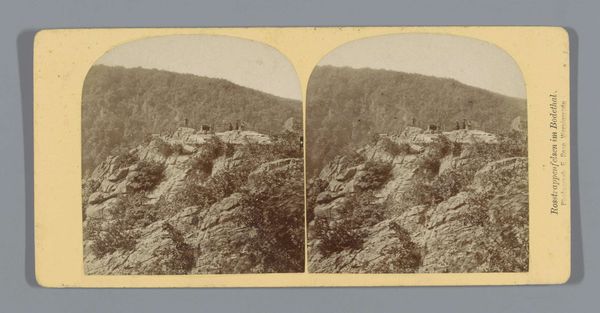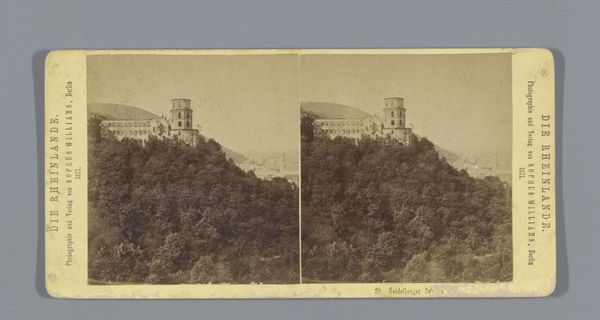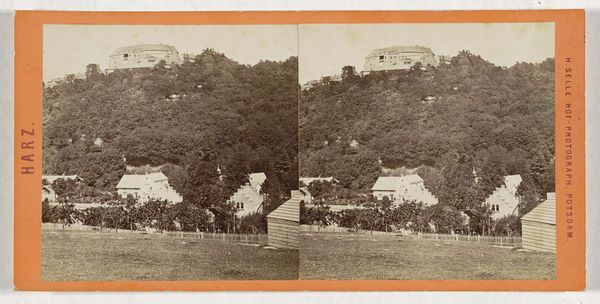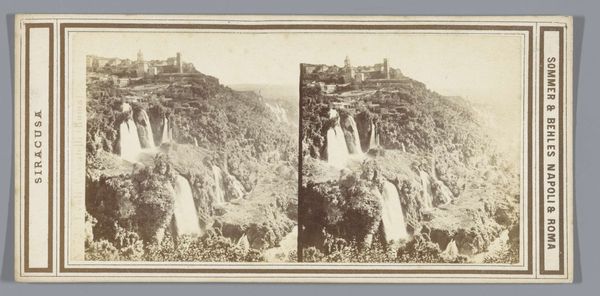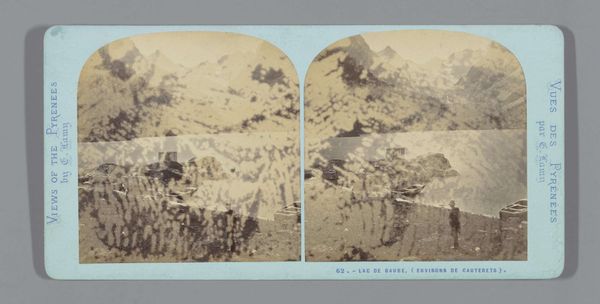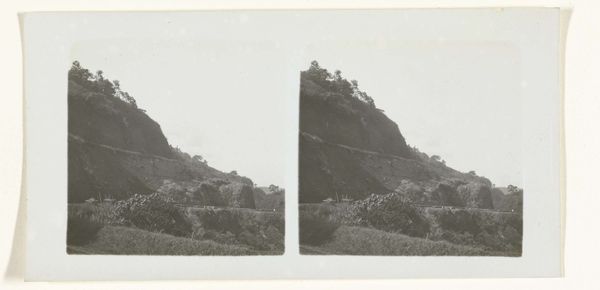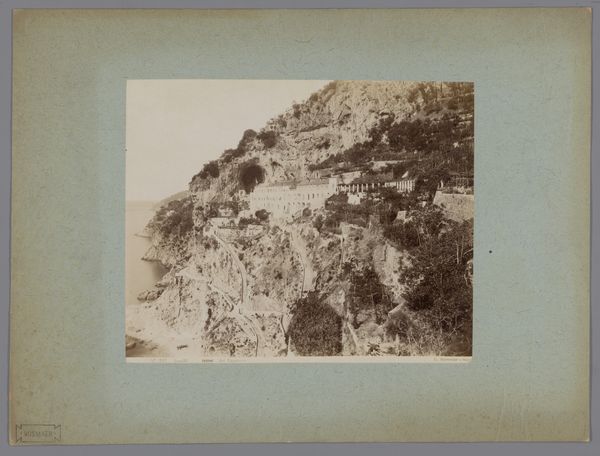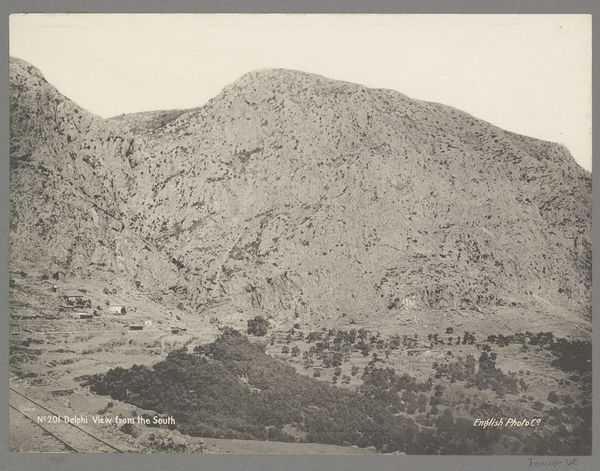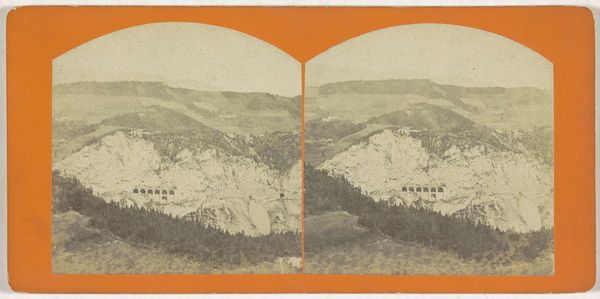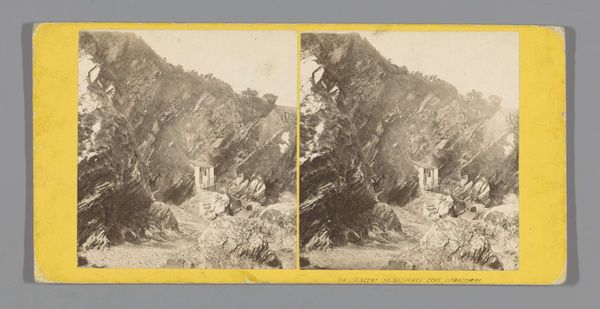
Dimensions: height 87 mm, width 176 mm
Copyright: Rijks Museum: Open Domain
Curator: This is Hermann Selle's "Gezicht op ruïne Rothenburg, nabij Kelbra," a print, potentially after a photograph, dating from between 1868 and 1890. Editor: The photograph certainly captures a melancholic, romantic sensibility, doesn't it? I am curious to hear your interpretation of this work. Curator: Well, given its materials and period, I'm more interested in the means of its production and dissemination. Think about the infrastructure required to produce a photographic print like this, the transportation networks needed to distribute it, and the emerging culture of photography that allowed for its consumption. Editor: I hadn't thought about it in those terms. I was more focused on the ruin itself as a symbol of time and decay. Curator: Of course. But look at the standardized format, probably produced in bulk. Consider how photography, particularly landscape photography, was becoming democratized. It offered a simulacrum of travel and experience, reproducible and affordable for a wider audience. How does that availability shift ideas of place and ownership? Editor: So, instead of focusing on the artist’s vision, you’re drawing attention to the societal forces that shaped its production and consumption? Curator: Precisely. What materials went into making it, and who was involved in that process? And how did such imagery, through its distribution and consumption, affect the way the middle classes, who bought images like this, conceptualized Germany and Germanness in a time of industrialization? Editor: That really changes how I see this image. It is far more connected to economics than I initially imagined. Curator: Exactly. It is important to consider art objects beyond aesthetics to interrogate their social and historical contexts. Editor: I have never considered this view of materiality, but this viewpoint truly broadened my knowledge of this medium and the related historical period.
Comments
No comments
Be the first to comment and join the conversation on the ultimate creative platform.
